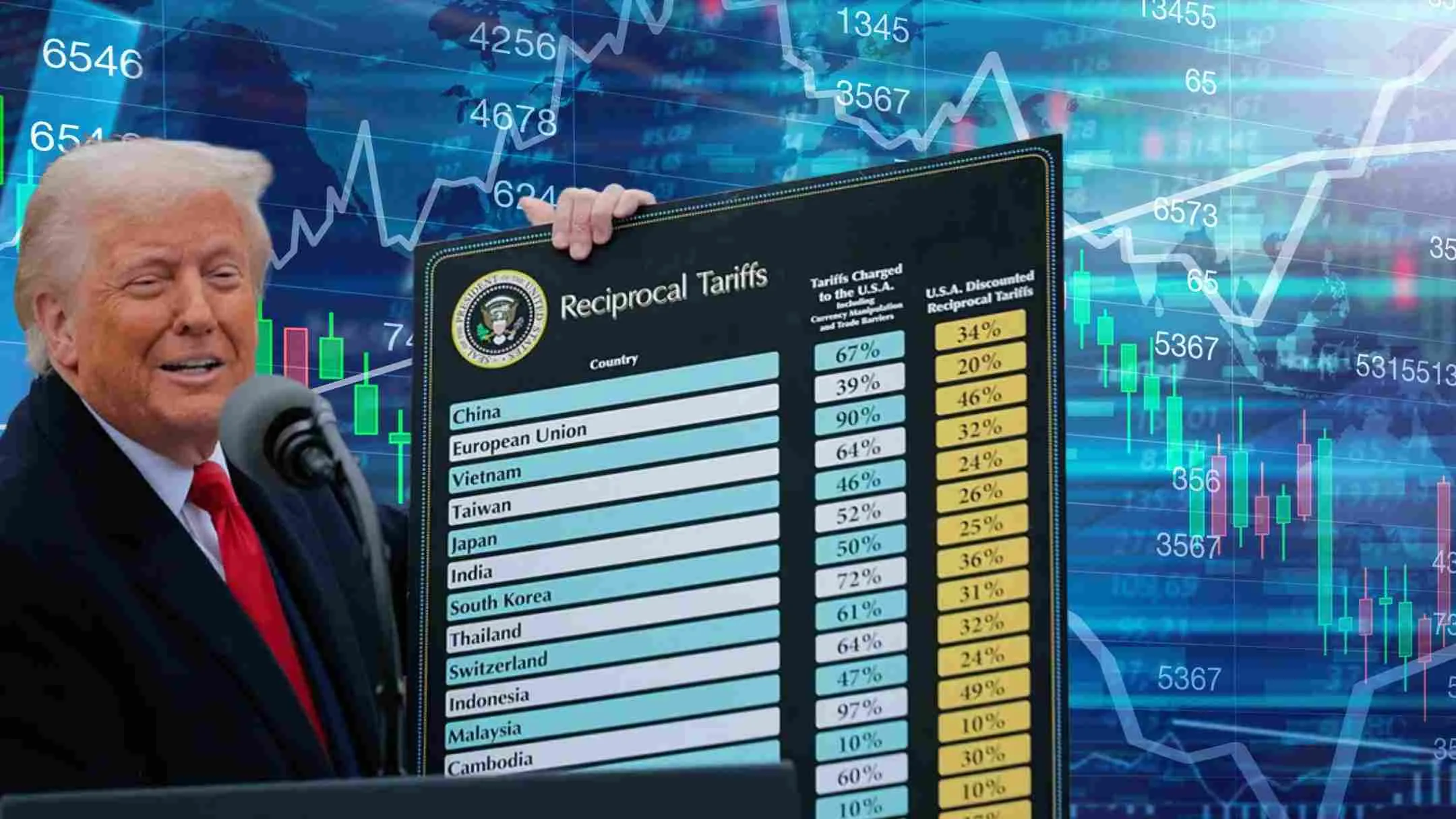The Indian stock market faced significant volatility following U.S. President Donald Trump’s announcement of a 25% tariff on all Indian goods, effective August 1, 2025. The move, which also includes an additional “penalty” tariff over India’s ongoing oil and defense imports from Russia, rattled investor confidence and triggered a sharp early sell-off on July 31.
The BSE Sensex plunged by as much as 786 points, or around 0.7%, in early trade, while the Nifty 50 declined over 200 points. Export-heavy sectors, including textiles, pharmaceuticals, gems and jewellery, auto components, and seafood, were the worst hit. Stocks such as Sona BLW and Bharat Forge, with significant exposure to the U.S. market, saw notable declines ranging between 3% to 6%.
However, markets began recovering by mid-morning. The Sensex managed to pare its losses by over half, closing down by only 296 points, or 0.36%. The Nifty also closed with a much smaller decline than expected. Analysts and market participants believe the initial panic was mitigated by a broader view that Trump’s move may be more of a negotiating tactic rather than a rigid policy decision. Hopes of future trade discussions and potential rollbacks helped ease investor fears.
Economists, however, caution that the tariffs could shave off up to 30–40 basis points from India’s GDP growth for FY2025-26. Manufacturing-driven exports are expected to bear the brunt of the impact, with downstream effects on employment and private capital expenditure. Yet, India’s strong domestic demand, solid corporate earnings, and expectations of fiscal support are seen as stabilizing forces in the medium term.
Another reason for the partial recovery in market sentiment is the view that India’s diversified trade relationships and geopolitical positioning might help mitigate long-term damage. The government is also expected to announce countermeasures or fresh export incentives to protect vulnerable sectors. Meanwhile, investors are advised to remain cautious with export-oriented stocks, while domestic consumption and infrastructure plays are being seen as safer bets.
Looking ahead, much depends on the outcome of India–U.S. trade negotiations expected in mid-August. If the two sides find common ground, tariffs may be scaled back or restructured. If not, the current volatility may deepen, particularly in sectors highly dependent on U.S. markets.
In summary, while Trump’s tariff bombshell caused short-term panic, the Indian markets demonstrated resilience. The Sensex, after an early plunge, managed a notable recovery, reflecting underlying investor confidence in domestic fundamentals. Nonetheless, risks remain, and market watchers will closely track trade talks and policy responses in the coming weeks.
Read More: Understanding Tax Concepts in India


